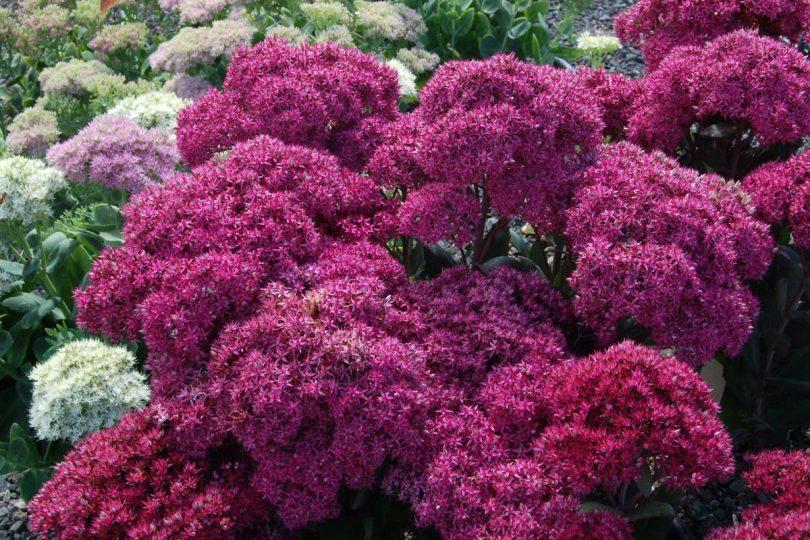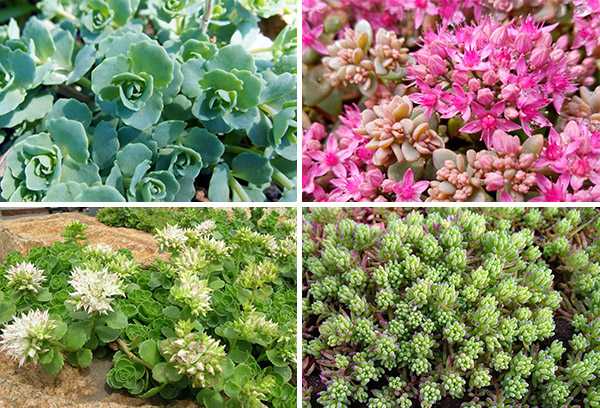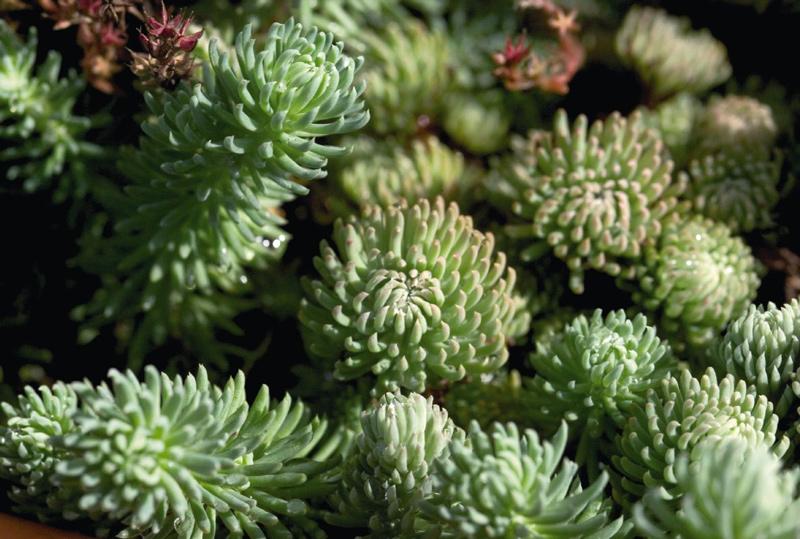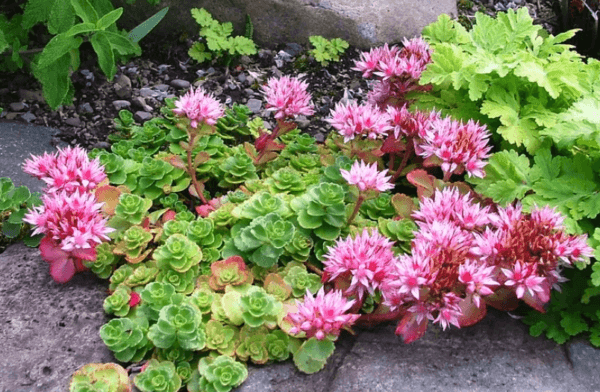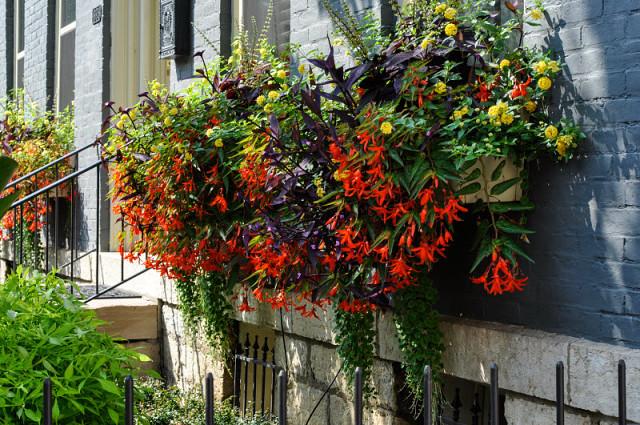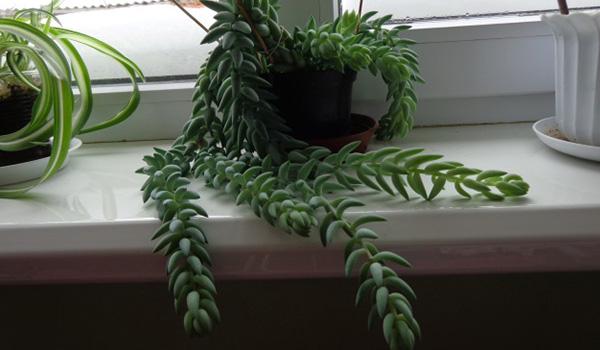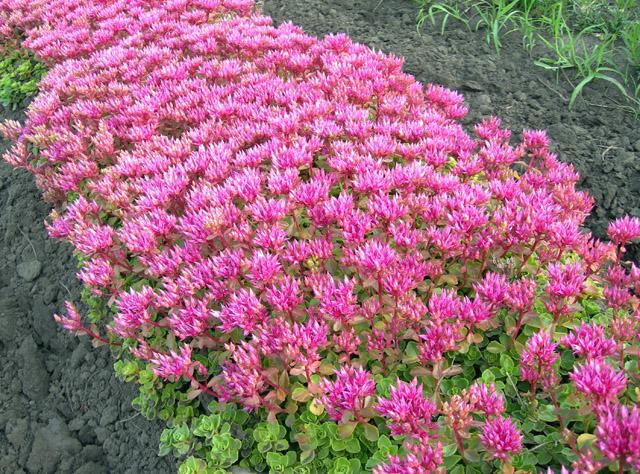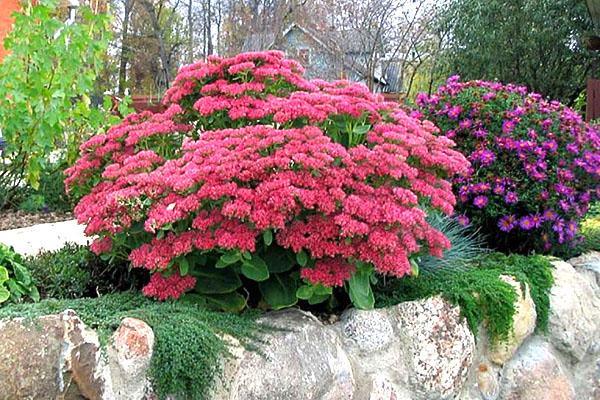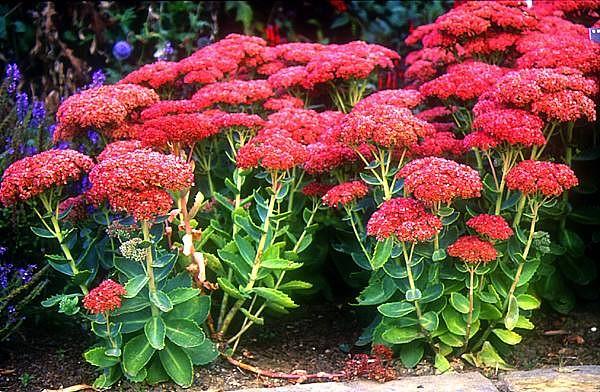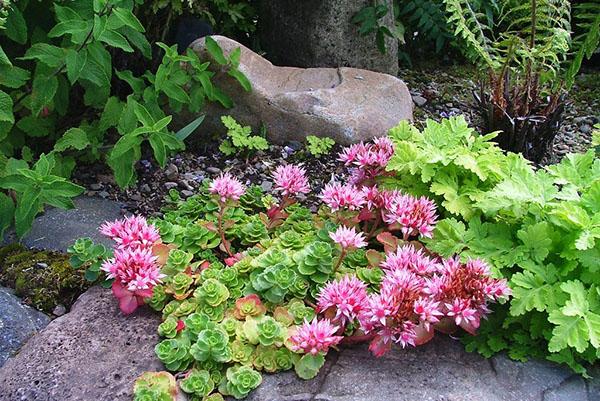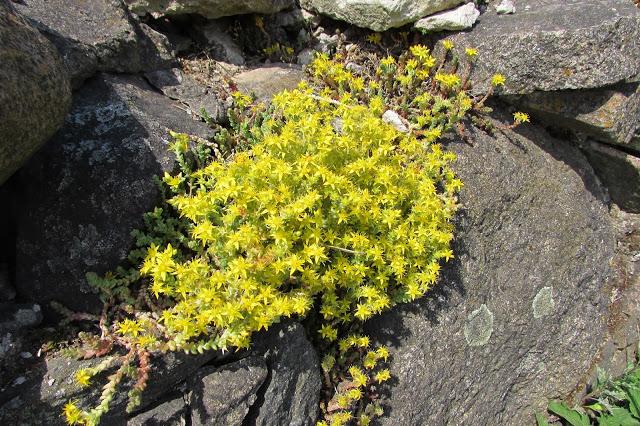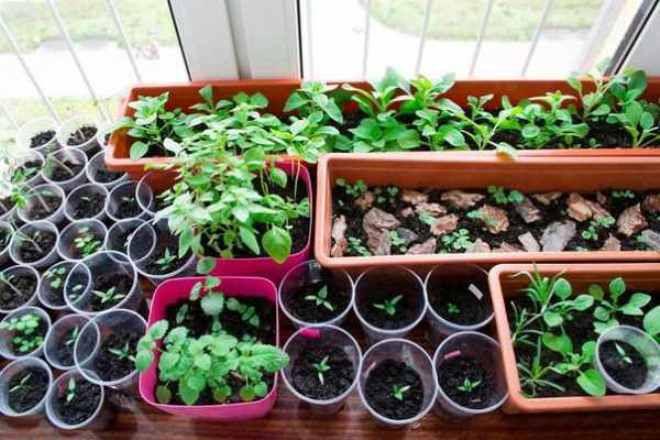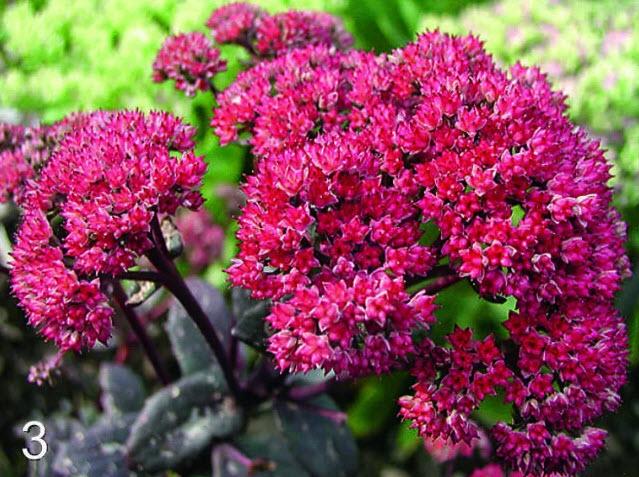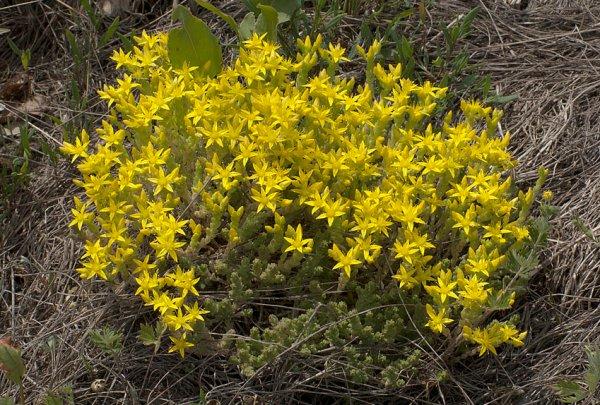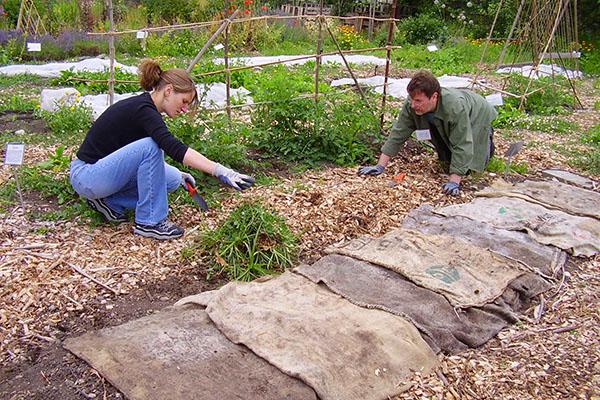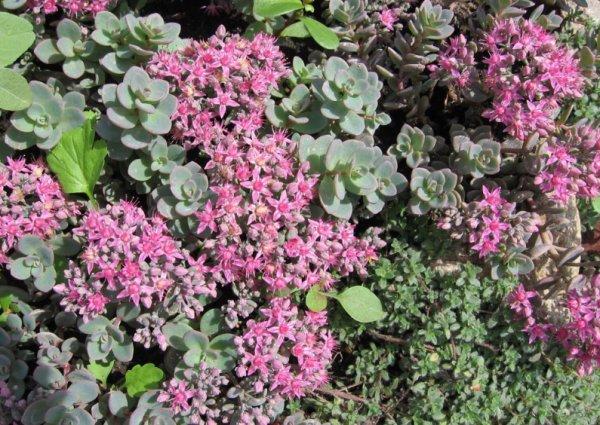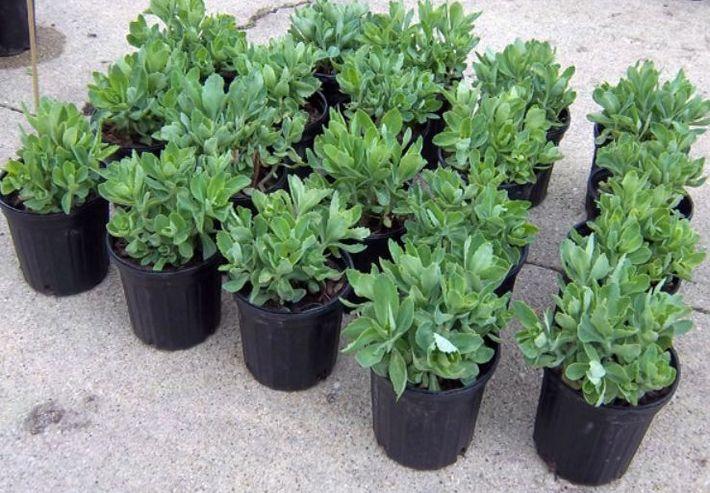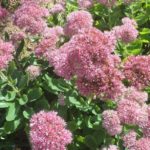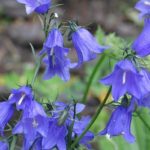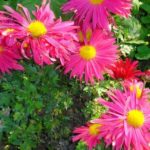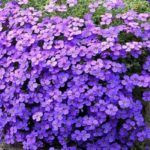Some plants attract attention not with their exquisite large flowers of unusual shapes, but with their large inflorescences. A large number of small sedum buds, collected in dense brushes or umbrellas, can become a real decoration of a flower bed. The succulent has taken root in gardeners’ cottages and apartments, delighting them with lush greenery and a sea of small flowers. Let's consider the features of planting and caring for sedum, the best types and varieties of flowers.
- Characteristics of culture
- Features of application in landscape design
- Benefits of growing at home
- Types and description of sedum varieties
- Ground cover
- Cornflower
- Sedum Siebold
- Forster's sedum
- Divergent
- False
- Caustic sedum
- Lydian
- Sedum Eversa
- Subulate
- Six-row
- Ampelny
- Shrubs
- Red dotted
- tenacious
- Ordinary
- Prominent
- Adolf
- Redleaf
- Rural
- Purple
- Yellow
- Sedum hybrid Abbeydor
- Growing sedum in open ground
- Selecting a location
- Preparing the ground
- How to sow seeds: timing and technology
- Planting seedlings
- Plant care
- Watering
- Fertilizer application
- Transfer
- Trimming
- Pests and diseases: control and prevention
- How does a flower winter over?
- Methods of propagation of sedum
- Seeds
- Cuttings
- Dividing the bush
Characteristics of culture
The Latin name of the culture is Sedum. The plant is a succulent and belongs to the Tolstyankov family.
Most species grow as perennials, some as biennial crops. The variety of forms often makes the sedum unrecognizable - the sedum grows as a lush bush or tightly weaves the soil with a real carpet. Sedum has dense, fleshy leaves that accumulate moisture and protect against drying out. The leaf blades are colored green, gray, and often have pink streaks. The color of the foliage depends on living conditions.
Flowers are collected in inflorescences in the form of a brush, umbrella or corymbose. Almost all types of sedum have a pleasant smell and are honey plants. The color of sedum flowers is varied - pink, white, blue, yellow. Blooms in summer and autumn. In nature, sedum is ubiquitous. There are more than 500 species, of which about a hundred are cultivated. Many varieties and hybrids have been created for landscaping areas. Tropical species are grown at home.
Features of application in landscape design
Large sedum inflorescences and bright, juicy greenery can decorate any area. In landscape design, many varieties are used in flower beds to create “velvet” pictures with alternating colors. Sedum bushes look great near ponds.Sedums are planted along the edges of flower beds, to create a border, and along garden paths. Dense planting of low varieties creates dense lawns that look good even in the absence of flowers - due to the decorative foliage. Creeping forms will hide the gaps of alpine slides and rockeries.
Benefits of growing at home
Flower growers have been growing sedum at home for a long time. To ensure flowering, special conditions must be met:
- moderate watering;
- decrease in temperature in winter (10-12 °);
- warmth and sun (south side) in summer;
- timely feeding.
Sedum blooms only with experienced gardeners who can provide the necessary conditions. Even in the absence of flowers, sedum pleases with decorative greenery and the beauty of the bush. Many people value the plant for its medicinal properties. It is used as a biostimulant, similar in action to aloe leaves. The succulent leaves are used for wounds and skin injuries, and they make healing infusions for heart pain and hypotension.
Information: close relatives of sedum are Crassula, Kalanchoe, Echeveria.
Types and description of sedum varieties
Sedum grows everywhere, the variety of natural forms is great. Plants are so different in appearance that it is sometimes difficult to believe that they belong to the same family. Let's consider the most popular and favorite types and varieties of sedum.
Ground cover
When creating a harmonious flower garden, ground cover plants with creeping stems come to the rescue. They cover the soil and serve as a backdrop for other crops. Sedums green the area with a beautiful lush carpet, which is colored with bright spots of buds.
Cornflower
Sedum stems grow 8-10 centimeters. The tops of the stems with leaves of a gray-green hue look like flowers themselves.The buds are pink-purple, reaching 0.5-0.6 centimeters when opened. They bloom in August.
Sedum Siebold
It has thin recumbent stems and fleshy leaves, collected in whorls of 3 pieces. The leaves are round, with a red tint along the edge. The flowers are pink, collected in thick umbrellas or shields.
Forster's sedum
Covers the entire area with a dense, low (10 centimeters) carpet. The foliage is gray-green, interspersed with pink. Yellow flowers rise 20-30 centimeters. Looks good hanging down in a pot.
Divergent
A low creeping plant hides all the gaps in flower beds with a thick carpet 5 centimeters high. The foliage turns pink in the sun. The flowers rise slightly above the green mass and can be pink or yellow.
False
A wonderful plant native to the Caucasus. False sedum is grown on alpine hills and used for landscaping sloping roofs. It has a long creeping rhizome and quickly spreads over a large area. The leaves are wedge-shaped, the flowers are pink-purple, the inflorescences are without upper leaves. It blooms for a long time - from June to October.
Caustic sedum
The natural species of sedum is successfully grown as a cultivated plant. A short sedum (8-10 centimeters) covers the entire area with a thick green carpet. In mid-summer it is covered with abundant yellow flowers, attracting bees with a pleasant smell.
Lydian
Lydian sedum covers the ground with real thickets, the stems are covered with a large number of medium-sized elongated fleshy leaves. Grows well in the shade. The flowers are white and rise low above the foliage.
Sedum Eversa
Evers' sedum is used for landscaping pebble slopes and screes. The plant is planted on alpine hills and used to hide bare areas near the house. Blooms in July, flowers last up to 2 months.The foliage is decorative, growing densely on smooth stems. The buds are densely located on corymbose inflorescences. Petals are light pink or crimson.
Subulate
In nature, awl-shaped sedum grows on the mountain slopes of the Caucasus. Shoots with a large number of subulate-linear fragile leaves of a yellow-green hue. The inflorescence is corymbose, dense, with white flowers.
Six-row
Sedum grows up to 8-18 centimeters, the stems branch strongly right from the base. The foliage is cylindrical in shape and grows very densely on the side shoots. The leaf color is green.
The inflorescences are loose, bright yellow flowers are sparsely arranged, shaped like small stars. Planted in a large group or alternating with other species.
Ampelny
Ampelous varieties and types of sedum are popular for cascading decoration of garden plots and apartments. They look good in pots and flowerpots.
Among the most favorite:
- Morgana. Sedum has stems that grow up to a meter and are strewn with thick, cylindrical leaves with pointed tips. Blooms with pink-red buds. Called "monkey tail".
- Siebold. The stem hangs 20-25 centimeters, the leaves are round in shape, of different shades.
- Burrito. Similar to Morgana, the edges of the leaves are round.
- Small leaf Makinoy. Sedum with small leaves of different colors.
- Mexican. An ampelous bush with shoots up to 20 centimeters and thin leaves. In the sun the foliage turns yellow, the flowers bloom yellow.
All ampelous species are unpretentious and develop well with a lack of sun. When grown in pots, regular watering is required.
Shrubs
Sedums with tall bushes and flower stalks are more popular among gardeners. They are clearly visible in flower beds; they are planted in separate clumps or form large groups of different shades.Their stems do not cover the ground, so the crops need regular watering.
Red dotted
The peduncle of the sedum rises to 60 centimeters, the color of the buds is white and different shades of pink. The foliage is not particularly bright, gray-green in color. The main difference between red-spotted sedum is its late flowering, which occurs in September. It is not worth planting in cold regions.
tenacious
The herbaceous perennial is found naturally in the Far East and Siberia. Grows on forest edges, meadows, rocky slopes of rivers. Refers to poisonous plants.
Ordinary
The tall-stemmed type of sedum is among the most popular. Popular garden varieties have been created on its basis. The bright, petiolate leaves have denticles on the edges. The peduncle rises 40-60 centimeters. Flowers bloom at the end of July. The corymbose inflorescence is densely packed with buds, the opening flowers look like stars. The best varieties are Matrona, Linda Windsor.
Prominent
A natural species, it came from Asia and has long been cultivated in Japan. The bush is erect, grows up to 60 centimeters. The leaves are sessile, dense, green. The inflorescences stand on a dense stalk, the diameter is up to 15 centimeters. The flowers are pink or carmine-red, each size is no more than 10 millimeters.
The prominent sedum became the ancestor of many varieties - Neon, Xenox, Diamond.
Adolf
Evergreen shrub with many stems. Young foliage is green and fleshy; with age, yellow and pink tints appear. The inflorescences are hemispherical, the color of the petals is white. When grown indoors, it blooms with difficulty.
Redleaf
Red-leaved or red-colored sedum is a shrub with falling shoots that rise with age. The leaves are distinctly green with a red ending. The flowers are yellow.
Rural
Selskogo sedum has woody stems up to 40 centimeters high. A flower of yellow tones on a short peduncle, the inflorescence is an umbrella. This type of sedum is not widespread. The bush grows slowly and requires sunny areas and regular watering.
Purple
The dense foliage of sedum will become a real decoration of the garden. Sheets with carved edges are covered with a waxy coating. Pink flowers stand out beautifully against its background. The peduncle rises up to 70 centimeters. The stems are dense, the tall bush does not fall apart and keeps its shape. Blooms in July.
The foliage has a slightly sour taste; it is consumed fresh or fermented.
Yellow
Yellow or pale yellow sedum has green, brown foliage, sometimes with a bluish tinge. The flowers are yellow. Winter-hardy, unpretentious appearance. A popular variety is Red Wiggle.
Sedum hybrid Abbeydor
Low bushes (35-40 centimeters) are covered with abundant green foliage. Flower color is purple-pink. The bush is falling apart. The inflorescence is corymbose and very dense, with an abundance of buds. Used in mixborders.
Growing sedum in open ground
When growing sedum, it is important to imagine what type of plant you will get. Many varieties cover large areas of soil with their stems and entwine their neighbors.
Selecting a location
The sedum is planted in a well-lit area. Light shade is allowed only for part of the day. Without enough sunlight, the bushes become elongated and the color of flowers and leaves suffers. Succulents do not like excess moisture; low-lying areas with stagnant water are not used. If necessary, drainage is done to dry the soil. For the same reason, you should not plant a bush under trees that drop their leaves in the fall.
Preparing the ground
Sedum does not have any special requirements for soil composition and grows well on any soil.It is important to ensure drainage and avoid the accumulation of puddles. If the groundwater level is high, the beds are raised. The soil is dug up and weeds are carefully removed. Heavy clay soils are lightened with sand or fine gravel. To increase fertility, humus is added.
How to sow seeds: timing and technology
In warm regions, sedum can be sown with seeds in the spring, directly into the ground, when consistently warm weather has established. Most gardeners prepare seedlings in advance.
Basic rules for planting sedum:
- Sedum is planted for seedlings in March-April.
- Soil composition – sand, humus, fertile soil in equal parts.
- Container – depth – 10-15 centimeters, with a laid drainage layer.
- Dilute the soil well and leave it to soak.
- Place the seeds in shallow grooves and cover with soil.
- Cover with film.
- Water with a spray bottle as it dries.
It is recommended to keep the containers in the cold (5-7°) for several days. Shoots appear in 2-4 weeks. When the third leaf grows, the seedlings are planted.
Planting seedlings
Ready sedum seedlings are transferred to open ground when the danger of frost has passed. For different regions this is the beginning or end of May. Holes for seedlings are made at a distance of 15-20 centimeters, using recommendations for planting this plant variety. The root system of the sedum is small; the seedling cannot be buried. Holes 20 centimeters deep are sufficient. After planting, the plants are watered abundantly.
Information: flowering of sedums begins 2-3 years after planting.
Plant care
Sedum is considered an unpretentious crop; most varieties do not require special care. It is important to remove weeds in a timely manner, carefully removing them from the beds.Weeds clog the sedum and slow down its growth.
Watering
Sedum does not need frequent regular watering. Sedum is watered only during dry summers, 2-3 times per season. The crop tolerates excess water worse than too little. After watering, the soil is loosened, creating oxygen access to the soil. Do this carefully due to the shallow roots.
Fertilizer application
Sedum does not need a lot of feeding. Ground cover species do not need to be fertilized. Particular care is taken to apply fertilizing with nitrogen, which disrupts the decorative appearance of foliage and reduces frost resistance.
It is permissible to feed tall sedums 1-2 times per season with complex fertilizers with phosphorus and potassium.
Transfer
In one place, sedum can grow for up to 5 years. In the future, the bush ages and needs rejuvenation. When updating the bush, it can be transplanted to another place. The bush is dug up in the spring, when the growing season has not yet started vigorously, and the soil is shaken off. Cut into pieces with a clean tool so that each has roots and buds. Leave for several hours in a shaded place. The sections are lubricated with fungicides. Planted in a new area.
Trimming
Dried sections of the stem and damaged leaves are regularly cut off. On bushes with colored foliage, green shoots are cut off to maintain the decorative appearance of the plant. In September or October, the bush is pruned for winter, so it is easier to protect the plant from frost.
Pests and diseases: control and prevention
In rainy summers and with excess watering, sedum suffers from fungal infections. Rot spots appear on stems and leaves. Damaged parts of the bushes are cut out, and the plants are treated with fungicides.
The most common pests that attack sedum are caterpillars, weevils, aphids, and thrips.For cleaning, insecticides of appropriate action are used.
Sedum is little susceptible to disease. When choosing a dry, ventilated area without strong shading and little watering, it does not cause any trouble for summer residents.
How does a flower winter over?
In autumn, plants lose their leaves. In tall sedum bushes, in preparation for winter, the stems are trimmed, leaving 3-4 centimeters. Dried flower stalks remain decorative, so bushes are often left near houses until spring. You can prune overwintered stems when the snow melts, before the growing season begins. In cold regions, plantings can be insulated with loose soil, river sand or fine gravel. If necessary, sprinkle snow on top.
Methods of propagation of sedum
Reproduction of sedum is not particularly difficult. New plants are produced by vegetative division and from seeds. Let's take a closer look at each method.
Seeds
Many gardeners obtain seeds from their own plants. To obtain seed, you need to let the flower stalks dry until they are completely dry and carefully cut them off. This is not easy to do; sedum blooms for a long time, often until the snow, and the seeds do not have time to ripen.
Important: sedum hybrids do not produce full-fledged seeds; parental properties are not transmitted.
You can plant seeds as seedlings at home or directly in open ground. The second method is only suitable for warm regions.
Cuttings
Most types of sedum are easy to propagate from cuttings. This method is considered faster and more reliable. In the spring, a cutting with 1-2 buds is cut from the bush and deepened into the ground 2-3 centimeters. The bottom sheets need to be cut off to prevent rotting. The prepared cuttings can be rooted in a pot and then transferred to the ground. When cutting cuttings in the fall, you will have to grow young seedlings at home.Sedum cuttings are placed in water and wait for the roots to grow. After this, they are planted in separate pots.
The transfer of sedum to the soil is carried out in the spring, when warm weather sets in.
Sedum reproduces easily; a stem that falls to the ground quickly takes root and forms a young plant. This property is used if sedum is already growing on the site. The soil around the adult bush is cleaned, loosened, and fertilized. Press the stem to the ground with a pin and water. Rooting occurs quickly. When cuttings are taken, the young bush completely retains the properties of the old plant.
Dividing the bush
Dividing one bush into several is another way to propagate sedum. It is good, if the sedum has already stayed in one place, it’s time to rejuvenate the plant. When dividing, it is important to remove the old part of the roots and bush, to create viable layering with roots and buds.
Division is carried out when the main processes of vegetation have not yet begun, the plant is not in the stage of active growth.
Any gardener can grow and propagate sedum. The plant does not have a capricious character, grows well in drought conditions, and does not require frequent feeding, pruning, or bush formation. Sedum attracts bees with its pleasant smell and promotes pollination of neighbors. The healing properties of sedum are another undoubted advantage of the plant.
Using different types of sedum, you can decorate alpine slides, flower beds, and create borders. Sedum differs favorably from other flowering plants by its highly decorative foliage and bush. A wide variety of species and varieties allows you to design the site in accordance with the characteristics of the territory and personal tastes.


